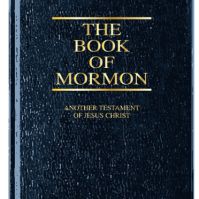 For many people of faith, reading is a large part of spiritual growth. Books can inform, advise, inspire and encourage your church members. A community library is a good way to share books, and it doesn’t have to cost a lot of money to start one. Here is a basic checklist for beginning to build a church library that everyone can enjoy.
For many people of faith, reading is a large part of spiritual growth. Books can inform, advise, inspire and encourage your church members. A community library is a good way to share books, and it doesn’t have to cost a lot of money to start one. Here is a basic checklist for beginning to build a church library that everyone can enjoy.
Location
The first thing you need to do is figure out where the library is going to be. It can start with a small space, such as an empty classroom, where you can put the collection on display and include a few tables or chairs. If you don’t have a whole room to designate for your library, a walk-in closet will suffice. People won’t be able to congregate in tiny spaces, but they will still have access to the materials.
Topics
After you know how much room there is to work with, you need to decide the ages to which you are going to cater. If you have a lot of young families in your church, you should consider having a section for children’s books. If your church is in a college town or there are a lot of retired teachers in your congregation, a section of scholarly tomes is likely to be well received.
You may also consider the issues that are important to your particular community. Think about current initiatives your church is taking:
- Reducing its carbon footprint
- Becoming a safer space for LGBTQIA+ members
- Addressing institutional racism or sexism
The great thing about creating your own church library is that you can make selections based on the values that are important to your members. Make room for books that educate and deepen the discussion of the direction in which your church is headed.
Resources
Unless your church is very well off, it is unlikely that it already has the initial funding you need for a library set aside in the budget. You can address this in several ways. Host a book drive, asking members for new or gently used donations. This gives you the chance to not only share your excitement about the new library, but it also extends the opportunity to members to be an integral part in building it. You may also ask the council or finance committee to consider adding the library to the next budget update. Until you can get ongoing financial support from the organization, however, you may have to raise the money for new materials yourself through fundraising or grant applications.
The next step is deciding where to purchase books and other materials for your collection. You may order a lot online, but don’t forget that secondhand bookstores and local shops are great resources, too. The shopkeepers may have recommendations you hadn’t considered, helping enrich your library with expert assistance. Another information resource that may prove useful is an online church library discussion group or association.
Records
It’s important to establish the ground rules from the beginning. Are the items in the church library to be loaned on the honor system? Do you plan to keep track of who has the books? If so, what system do you plan to use to catalog borrowers, and who is in charge of doing so? What is the time frame for returning borrowed books? These are all questions that need to be answered before the library is officially open to members.
A church library can be a wonderful addition to your faith community. It can help strengthen your members’ faith and introduce them to beloved stories. Once you have a designated location and a collection of books to get started, you may be surprised at how quickly it grows.



